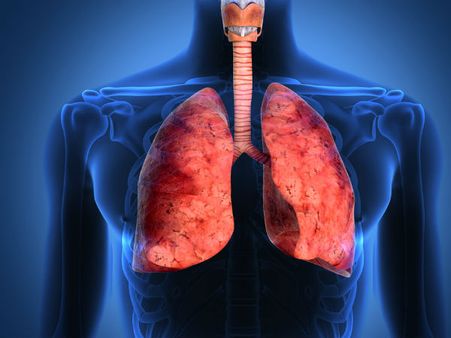Just In
- 43 min ago

- 1 hr ago

- 1 hr ago

- 2 hrs ago

Don't Miss
- Sports
 KKR vs RR My11Circle Prediction IPL 2024 Match 31: KOL vs RAJ Fantasy Tips & Expert Picks
KKR vs RR My11Circle Prediction IPL 2024 Match 31: KOL vs RAJ Fantasy Tips & Expert Picks - News
 UPSC CSE Result 2023: Civil Services Final Result Out, Check Toppers List
UPSC CSE Result 2023: Civil Services Final Result Out, Check Toppers List - Movies
 Bigg Boss Malayalam Season 6: Gabri Decides To Quit The Show; Jasmine And Resmin Burst Into Tears
Bigg Boss Malayalam Season 6: Gabri Decides To Quit The Show; Jasmine And Resmin Burst Into Tears - Finance
 Tohfa, Tohfa, Tohfa: Tata's NBFC To Power; 9 Tata Group Stocks To Pay Massive Dividends In Coming Weeks
Tohfa, Tohfa, Tohfa: Tata's NBFC To Power; 9 Tata Group Stocks To Pay Massive Dividends In Coming Weeks - Travel
 From Coconut Breaking on Head to Men Dressing as Women: 12 Unique Indian Rituals Explored
From Coconut Breaking on Head to Men Dressing as Women: 12 Unique Indian Rituals Explored - Technology
 ASUS Zenbook DUO 2024 Launched in India – Check Price, Specs, Where to Buy
ASUS Zenbook DUO 2024 Launched in India – Check Price, Specs, Where to Buy - Automobiles
 Renault Duster And Nissan Models To Feature Turbo-Petrol Engines: Hybrid In The Makes?
Renault Duster And Nissan Models To Feature Turbo-Petrol Engines: Hybrid In The Makes? - Education
 TN MRB Assistant Surgeon Recruitment 2024; 2553 Vacancies, Application Procedure Selection Details and more
TN MRB Assistant Surgeon Recruitment 2024; 2553 Vacancies, Application Procedure Selection Details and more
Precaution Is Better Than Cure, Be Aware And Know The Difference Between Swine Flu And Seasonal Flu
Now a days there is a much hype of a scary respiratory tract disease called swine (meaning pig) flu (meaning influenza) or H1N1 flu as it is caused by H1N1 virus. No wonder that this deadly virus claimed many lives worldwide and in India also. In India the incidences of swine flu have increased in 2015 during the month of january and february. Here today we will discuss the difference between swine flu and seasonal flu, what is swine flu, swine flu symptoms, swine flu vaccine and swine influenza mode of transmission and precautions to be made.
If we have a proper understanding of what swine flu is and how it spreads , we can adopt the proper measures to curb the diseases and its spread. It is very contagious disease and here today in this article we will enlighten you with all the much needed information regarding swine or H1N1 flu.
Today keeping in consideration your precious lives, we at boldsky will be pleased to share with you some important information regarding swine flu such as difference between swine flu and seasonal flu. Have a look at swine flu conditions diseases and symptoms.

Seasonal Influenza
Let us first tell you what is an seasonal influenza or flu. It is a respiratory track diseases caused by viruses. Which affect throat, nose, trachea and lungs. Normally this seasonal flu or influenza will go away after seven days or so. However if it stays long, then you need to have antibiotics after consulting a doctor. It may be a bacterial infection If it lasts for more than 7 days. Now coming to it's symptoms they are sore throat, mild fever, stuffy or running nose and fatigue. All these symptoms are mild. Our body is well adapted to cope up with this type of seasonal flu. Our immunity is familiar with this seasonal influenza and fights against it, so it normally goes without any complications.

Seasonal Influenza
However If seasonal flu is prolonged and left untreated, it can cause many complications such as pneumonia. The person infected with seasonal flu can transmit the infection to other persons after 24 hours after being infected.

Seasonal Influenza
There are almost 200 strains of viruses that can cause seasonal flu or cold. Flu (influenza) viruses are divided into three broad categories influenza A, B or C. Influenza A is the most common type. H1N1 flu is a variety of influenza A. It is the most deadly virus among all and enters the cells . Our body also can not offer immunity as it is a new virus for the immune system.

Swine flu
What is swine flu in humans? Now coming to swine flu that is in minds of almost every body these days. Swine flu as the name indicates initially spread to humans through infected pigs. It came into being in 2009 spring. This flu virus called as H1N1 initially targets the pigs. Any human having a close contact with infected pigs can get the viral transmitted in his or her body. Now the same infected person with swine flu can infect other human population. Swine flu is also a respiratory disease like seasonal flu. However it spreads deep inside the throat, trachea, lungs even stomach and intestines.

Swine flu
Our immunity is not prepared to deal with this virus as it is a new virus. Our immunity can't recognize it as it is not ready to fight against this virus. As a results H1N1 virus invades the body without any restriction. Pregnant women, elderly persons, children, immuno compromised patients such as with with kidney transplant and the persons who are having steroidal drugs are at more risk of developing swine flu. Swine flu treatment with early diagnosis is possible by anti viral drugs and proper care. If the infection is left unattended than it can enter blood and can also claim the life of the infected person. Here you need not to panic, have a close look on flu symptoms and visit your doctor as soon as possible if you suspect a swine flu.

Mode Of Transmission Of Swine Influenza
Swine flu can transmit from close contact with the infected pigs. Eating raw uncooked meat pork meat. Then the infected person can spread the disease to other person through the following means

Droplet Transmission
The flu spreads when you inhale or breathe in the droplets that are expelled when an infected person coughs or sneezes or talks. Those within the zone affected by a cough or sneeze (up to two meters) are at high risk of infection.

Contact Transmission
Coming in contact with saliva, nasal and eye mucous secretions from infected people spreads the disease. It can also spread if the infected person shakes his infected hand with mucous on it with other person.

Patients Fomites
fomites are the personal things that an infected person uses such as towel, tisues, bedding etc. When a person uses these infected things then he may get the disease, The reason behind this is that virus is present in nasal secretions, saliva, phlegm of infected person. However you can also get the disease after touching anything that is being infected by mucous secretion of infected person.

Preventing Spread Of Disease
Wear face masks, this prevents inhalation of droplets coming from an infected person, avoid crowded places and travel to infection hit areas. It is advised to use a hand sanitizer when you travel and apply it before you eat anything. There is no way to prevent physical contact with the virus in places frequented by lots of people, such as supermarkets and trains, so it's vital to wash hands upon returning home. Please diligently wash your hands before preparing food or engaging in other activities.

Swine Flu Vaccine India
Vaccine is a inactivated form of a virus or bacteria that is admistered before getting the disease. It prepares the immunity to fight against the upcoming infection. It helps in production of antibodies (weapon against the infection) to fight against the upcoming infection. Immunity gets alert and offers protection. The flu vaccine is believed to be effective in preventing disease symptoms, lessening the effects of the flu, and preventing death in those who get infected with the flu virus after vaccination.(click next slide)

Swine Flu Vaccine India
However, flu vaccinations don't provide perfect immunity, and it is still possible to contract the flu after getting a flu shot. It's always important to take care to avoid getting infected. In addition, the protection that flu vaccines provide against severe illness and death can be seen as a great advantage. Still, in rare cases, strong reactions (side-effects) to vaccines can occur, causing severe post-vaccination health complications.

Incubation Period
It is the time when symptoms starts to appear after the entry of infectious substance (virus, bacteria) into the body. The World Health Organisation points out that globally after exposure, a person will come down with swine flu symptoms in 4 to 6 days (5 days on the average) or maximum after 7 days. This virus has a longer incubation period than seasonal flu which is 1 to 3 days.

Difference Between Swine Flu And Seasonal Flu
There is a very less or minor difference between the swine flu symptoms and seasonal flu. At times it gets hard to differentiate between the symptoms. Swine flu symptoms are more intense, painful, more high body temperature and one important thing is that , there is diarrhea and vomiting in case of swine flu which normally does not occur in seasonal flu.

Difference Between Swine Flu And Seasonal Flu
The symptoms of swine flu are fever, chills, muscle pain, weakness, fatigue, sore throat, headache, persistent coughing, persistent fever, painful swallowing and the most important symptom that can differentiate it from seasonal flu is diarrhea and vomiting. The symptoms of seasonal flu or influenza are the same but they are mild and there is no diarrhea and vomiting.
Now Here We Will Point Out Some Major Differences Between Swine Flu And Seasonal Flu

Fever
Swine
flu:
Fever
is
usually
present
with
H1N1
in
up
to
80%
of
all
flu
cases.
A
temperature
of
101
degree
Seasonal
Flu:
Mild
fever
is
common
with
the
seasonal
flu.

Coughing
Swine
flu:
A
non-productive
(non-mucus
producing)
cough
is
usually
present
with
H1N1
(referred
to
as
dry
cough).
Seasonal
Flu:
A
dry
and
hacking
cough
is
often
present
with
the
seasonal
flu
but
with
low
intensity.

Aches
Swine
flu:
Severe
aches
and
pains
are
common
with
H1N1.
Seasonal
Flu:
Moderate
and
less
body
aches
are
common
with
the
seasonal
flu

Stuffy Nose
Swine
flu:
Stuffy
nose
is
not
commonly
present
with
H1N1.
Seasonal
Flu:
A
runny
nose
is
commonly
present
with
the
seasonal
flu.

Chills
Swine
flu:
80%
of
people
who
have
H1N1
experience
chills.
Seasonal
Flu:
Chills
are
mild
to
moderate
with
the
seasonal
flu.

Tiredness
Swine
flu:
Tiredness
is
severe
with
H1N1.
Seasonal
Flu:
Tiredness
is
moderate
and
more
likely
referred
to
as
a
lack
of
energy
with
the
seasonal
flu.

Sneezing
Swine
flu:
Sneezing
is
not
common
with
H1N1.
Seasonal
Flu:
Sneezing
is
common
present
with
the
seasonal
flu.

Sudden Symptom
Swine
flu:
A
person
will
come
down
with
swine
flu
symptoms
in
4
to
6
days.
H1N1
hits
hard
and
includes
sudden
symptoms
like
high
fever,
aches
and
pains.
Seasonal
Flu:
Symptoms
tend
to
develop
after
1
to
3
days
after
the
entry
of
virus
in
the
body
and
include
flushed
face,
loss
of
appetite,
dizziness,
vomiting,
nausea.

Headache
Swine
flu:
A
headache
is
very
common
with
H1N1
and
present
in
80%
of
cases.
Seasonal
Flu:
A
mild
headache
is
common
with
the
seasonal
flu.

Sore Throat
Swine
flu:
It
is
less
common
in
swine
flu
and
even
if
it
is
present
it
is
mild.
Seasonal
Flu:
Sore
throat
is
commonly
present
with
the
seasonal
flu.

Chest Discomfort
Swine
flu:
Chest
discomfort
is
often
severe
with
H1N1.
Seasonal
Flu:
Chest
discomfort
is
moderate
with
the
seasonal
flu.
If
it
turns
severe
than
seek
medical
attention
immediately.
-
 wellnessTwo Swine Flu Cases In Odisha
wellnessTwo Swine Flu Cases In Odisha -
 disorders cureEverything You Need To Know About The Common Cold And Flu
disorders cureEverything You Need To Know About The Common Cold And Flu -
 disorders cureAlert! Swine Flu With Pandemic Potential Reported In China
disorders cureAlert! Swine Flu With Pandemic Potential Reported In China -
 wellnessAfrican Swine Fever: What You Need To Know
wellnessAfrican Swine Fever: What You Need To Know -
 disorders cureBird Flu: Causes, Symptoms, Risk Factors, Diagnosis And Treatment
disorders cureBird Flu: Causes, Symptoms, Risk Factors, Diagnosis And Treatment -
 wellness11 Healthy Tips On How To Prevent Swine Flu
wellness11 Healthy Tips On How To Prevent Swine Flu -
 wellnessSwine Flu Q&A: What You Need To Know
wellnessSwine Flu Q&A: What You Need To Know -
 wellness10 Home Remedies To Prevent Swine Flu
wellness10 Home Remedies To Prevent Swine Flu -
 disorders cureSwine Flu: Symptoms, Causes, Treatment & Prevention
disorders cureSwine Flu: Symptoms, Causes, Treatment & Prevention -
 newsBeware Of Swine Flu, It Can Trigger Type 1 Diabetes; 10 Best Swine Flu Preventive Tips
newsBeware Of Swine Flu, It Can Trigger Type 1 Diabetes; 10 Best Swine Flu Preventive Tips -
 newsSwine Flu: 9 Deaths, 58 Positive Cases In Punjab; How To Boost Immunity & Prevent H1N1?
newsSwine Flu: 9 Deaths, 58 Positive Cases In Punjab; How To Boost Immunity & Prevent H1N1? -
 newsSwine Flu On The Rise: Aamir Khan And Kiran Rao Latest Victims!
newsSwine Flu On The Rise: Aamir Khan And Kiran Rao Latest Victims!


 Click it and Unblock the Notifications
Click it and Unblock the Notifications



